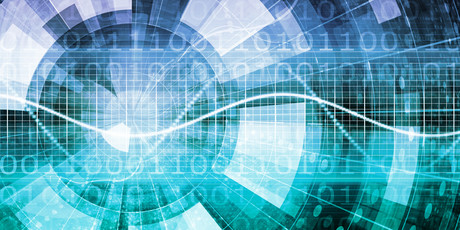Ambient backscatter for IoT sensors

IoT sensors could connect via ambient radio waves following demonstration of an ultra-wideband backscatter system.
Internet of things (IoT) systems usually link networks of sensors via radio, but battery power puts limits on usability. Disney Research has determined that one solution may be to get rid of the radios altogether and communicate via the ambient radio waves from TV, radio and mobile phones.
Researchers led by Alanson Sample, associate lab director and leader of Disney Research’s Wireless Systems group, have devised an ultralow-power system of sensors that transmit data to a central receiver by reflecting the ambient radio waves from commercial broadcasting systems that already bathe most office environments.
This approach radically reduces the power requirements of the sensor nodes because it is the generation of radio waves that consumes most of their battery power. In a demonstration in a Disney Research lab, the researchers were able to meet the tiny bit of power demand that remained by using solar cells optimised for low-light conditions.
The researchers presented details of their ultra-wideband (UWB) ambient backscatter system at the IEEE Conference on Computer Communication, INFOCOM 2017, in Atlanta in June. The team, which included Chouchang Yang and Jeremy Gummeson, demonstrated the system in an indoor office environment, using ambient signals from 14 radio towers as well as two mobile phones.
“The promise of the Internet of Things is that wireless sensors will be ubiquitous, allowing devices to sense their environments and talk to each other,” said Markus Gross, vice president at Disney Research.
“As we move towards connecting the next billion wireless devices to the internet, however, the use of batteries to power these devices will become unworkable. UWB ambient backscatter systems, which potentially could be deployed in any metropolitan area, hold great potential for solving this dilemma.”
Backscatter communication already is used in passive RFID tags, but these systems have limited range, which makes them impractical for IoT systems.
Other researchers have shown systems that require even less power by using ambient radio waves from a single source, such as a TV station. But, again, the range is limited to a few metres unless the power of the ambient signals is boosted to high levels.

Sample said the UWB approach — which backscatters all ambient sources — offers key advantages. Using multiple backscatter channels boosts the signal-to-noise ratio, substantially improving the sensitivity of the backscatter reader and decreasing dead zones. That, in turn, enables the system to operate on real-world ambient sources and substantially extends the range — to 22 metres when using ambient signals from broadcast towers and 50 metres when using ambient signals generated by mobile phone up-link traffic.
The ultralow-power sensor nodes are necessarily simple, Sample said, which requires the backscatter reader to do the heavy lifting for the system. The reader must receive the backscatter signals, decode and combine multiple backscatter carriers to recover the data from each sensor. The reader uses four software-defined radio receivers — one for the FM radio band, another to cover most of the cellular uplink and downlink bands and two for digital TV bands.
Because the hardware doesn’t have to be tuned to any particular band, the UWB system can be deployed in almost any metropolitan area, he added. Unlike other experimental systems that leverage ambient radio waves, the Disney system doesn’t focus on a single signal source, but uses all available ambient radio sources, from FM radio broadcasts to digital TV signals to the transmissions to and from cellular phones.
The new wildfire reality: mapping a response
Firefighter-turned-researcher Chris Dunn is helping pioneer data-driven solutions to tackle...
ARCIA update: LMR is not dead yet
Be it mining, rail, public safety, transport or utilities, everyone is embracing new technology...
Towards 1 Tbps throughput using sub-terahertz bands
In order to enable the near-instantaneous communication promised by 6G, ultrahigh data speeds...






